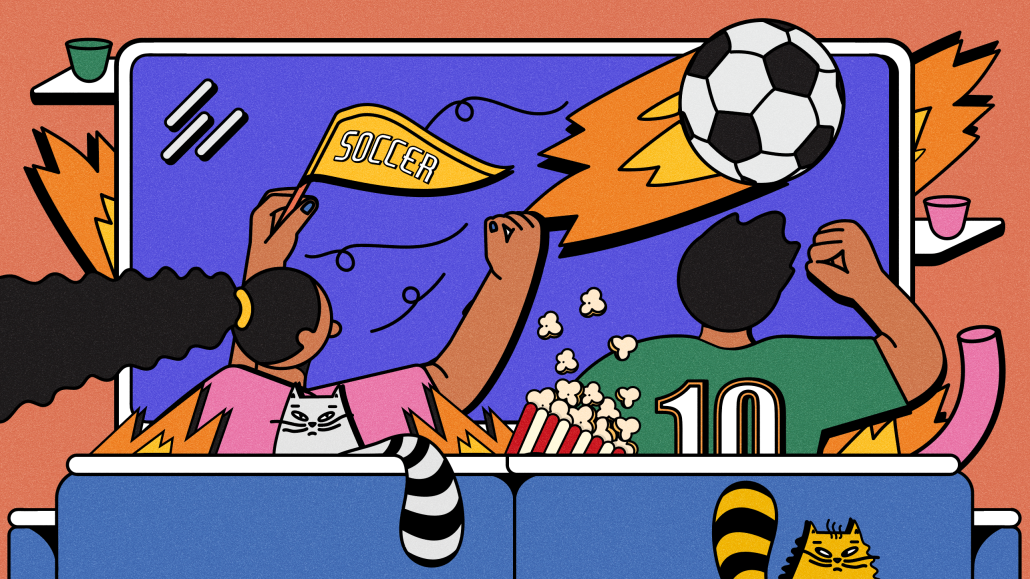Register by Jan 13 to save on passes and connect with marketers from Uber, Bose and more
Teams and sponsors approve of ‘League of Legends’ esports ecosystem changes

As of Tuesday, June 11, Riot Games is combining several of its “League of Legends” leagues across Asia and the Americas. So far, most stakeholders in Riot’s esports ecosystem appear to approve of the change, despite the potential for conflicts between regional sponsors.
The updates to Riot’s “League of Legends” ecosystem were announced by Riot esports head John Needham during a “Dev Update” posted to the official “League of Legends” YouTube channel on June 11. The biggest change was the consolidation of Riot’s “League of Legends” leagues in the Americas — the North American LCS, the Latin American LLA and the Brazilian CBLOL league — under a single umbrella.
The new league, so far left unnamed, will be split into North and South regional conferences. Each conference will consist of eight teams, with the LCS contributing six teams to the North conference and CBLOL contributing six teams to the South conference. For each conference, the remaining two team slots will be filled by one team from Latin America and one team from the second tier of “League of Legends” esports, determined via a promotion and relegation system.
“Our priority of making the sport sustainable for the long term through multiple revenue streams remains unchanged,” said Riot Games global head of esports partnerships and business development David Mulhall. “This change will actually add additional opportunities across our ecosystem for brand sponsorships and in-game item sales.”
Reasons for the change
The announcement followed a March blog post by Needham stating that Riot would shift its “League of Legends” team revenue share model from a focus on sponsorship sales toward digital content and in-game item revenue — a strategy cribbed from Riot’s “Valorant” ecosystem, which ran its first ecosystem-wide in-game item revenue share earlier this year.
“We’re supportive of the changes. I’m glad to see Riot take things that have been working well in ‘Valorant’ and apply it to the League of Legends ecosystem,” said Steve Arhancet, co-CEO of Team Liquid, whose “League of Legends” roster competes in the LCS. “This will certainly improve viewership and engagement in the LCS, which will continue the positive trends we’ve already been seeing this year. We have high hopes for even bigger things in 2025.”
In addition to keeping team owners happy, the changes help take some heat off of Riot’s esports department, which was hit by layoffs earlier this year. Riot Games is currently the last major game publisher to own and operate its own esports leagues, and consolidating some of those leagues is a sign that the publisher is streamlining its esports operations as it grows more willing to work with third-party league operators.
Combining the LCS with other regional leagues could also help boost “League of Legends” viewership figures, some of which have flagged over the past year. Though average viewership of “League of Legends” events is up in 2024, peak viewership of the North American “League of Legends” circuit — a key metric for advertisers — has decreased by roughly 8 percent year over year.
“Partners of the new APAC and restructured Americas league will benefit from a much wider audience, a third split [season] annually, higher stakes competition attracting eyeballs, and numerous other benefits,” Mulhall said.
Sponsorship challenges
Sponsorships represent a potential wrinkle as Riot implements its ecosystem changes. Regional leagues such as the LCS have their own sponsors that will inevitably be affected as the league is folded in with other regions, and Mulhall acknowledged that conflicts between on-stage partners could lead to possible challenges in the future.
“I’m confident that we will mitigate those challenges (and in many cases already have done so),” Mulhall said. “We also now will have enhanced language feeds for more region-specific partners.”
The consolidation of Riot’s Americas leagues also risks taking some focus away from the United States “League of Legends” audience, to the detriment of potential advertisers. LCS sponsor Pagoda Snacks, for example, flagged the league’s U.S. ties as one reason behind its decision to sign with the LCS in February.
“At this point, we’re still very focused on North America and activating in that space,” said Pagoda marketing manager Monica Bell in an interview prior to the announced ecosystem changes on June 11. “Pagoda is only sold in the U.S., so in terms of what makes sense for the brand, it’s really playing within North America.”
For Riot Games sponsors with a more global focus, the changes represent an opportunity to reach a wider audience via Riot esports. In spite of the upheaval, Mastercard, a longtime sponsor of the LCS and other Riot esports properties, has embraced the change.
“This is welcome news to Mastercard,” said Mastercard evp of global sponsorships and partnership model Pernilla Winberg Babtist. “As a global company, adding a third destination to the event calendar provides more opportunities to leverage League of Legends with our regional customers, provide more priceless experiences to cardholders and connect with this passionate fanbase more frequently.”
More in Marketing

OpenAI’s countdown: monetization, ads, and a Google-shaped threat
With fierce competition from Google et al, the clock is ticking for the AI company to launch its ad business.

Crisis, culture and costs: The new reality of the modern CMO
Crisis, culture and cost pressures are reshaping the modern CMO into a revenue-driven strategist uniting marketing, communications and finance.

Digiday+ Research: The marketer’s guide to AI applications, agentic AI, AI search and GEO/AEO in 2026
Digiday’s annual AI report explores how marketers are navigating the opportunities and challenges AI brings as it becomes an indispensable piece in their toolkits.







